|
This page shows some examples
of some of the material that we use for tops. All top material is hand
selected for its acoustic properties by holding the plate in a certain
location and tapping it with the other hand in another special location. The
resulting "tap tone" gives us an indication of what the end product will
sound like. Since this is one of the most important elements of the guitar,
it deserves a great deal of attention...
We have commented
on the properties on the various tonewoods. These are generalizations and
there can be much variation within a species and even within the same tree
for that matter.
|
|
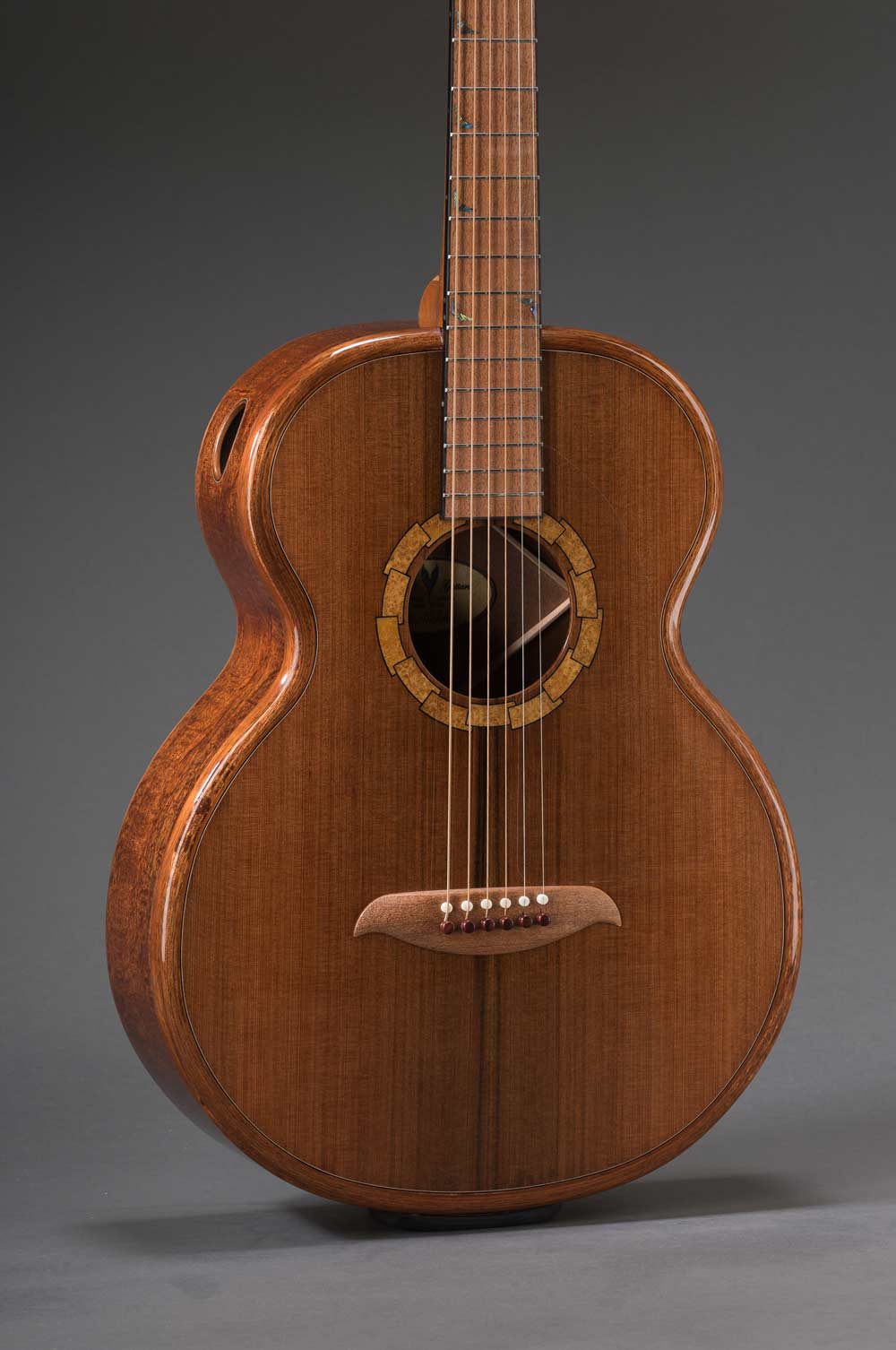
|
Sinker Redwood
There are a wide variety of
shades and striping in this material. One thing they all have in common
though is a stunning sound.
Many have commented on its good balance from
bass to mids to trebles. The sound of Sinker redwood has been termed
"complex" because of the richness of its overtones. Pluck a string in a
quiet room and listen carefully. It is as if a choir shows up and is singing
along. It has rich and strong overtones similar to Western Red cedar and
crisper, punchy treble frequencies reminiscent of spruce.
Because of its light weight, it is very
responsive. Sinker redwood is softer than Sitka Spruce and requires slightly
more care. Also, use light gauge strings only. |
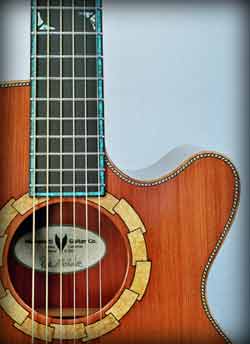 |
Redwood
Redwood is very similar
to Sinker redwood in every way except the color. Like sinker, this old
growth redwood has a responsive, three-dimensional brilliance that fingerstyle
guitarists really love. Again, use light gauge strings only. |
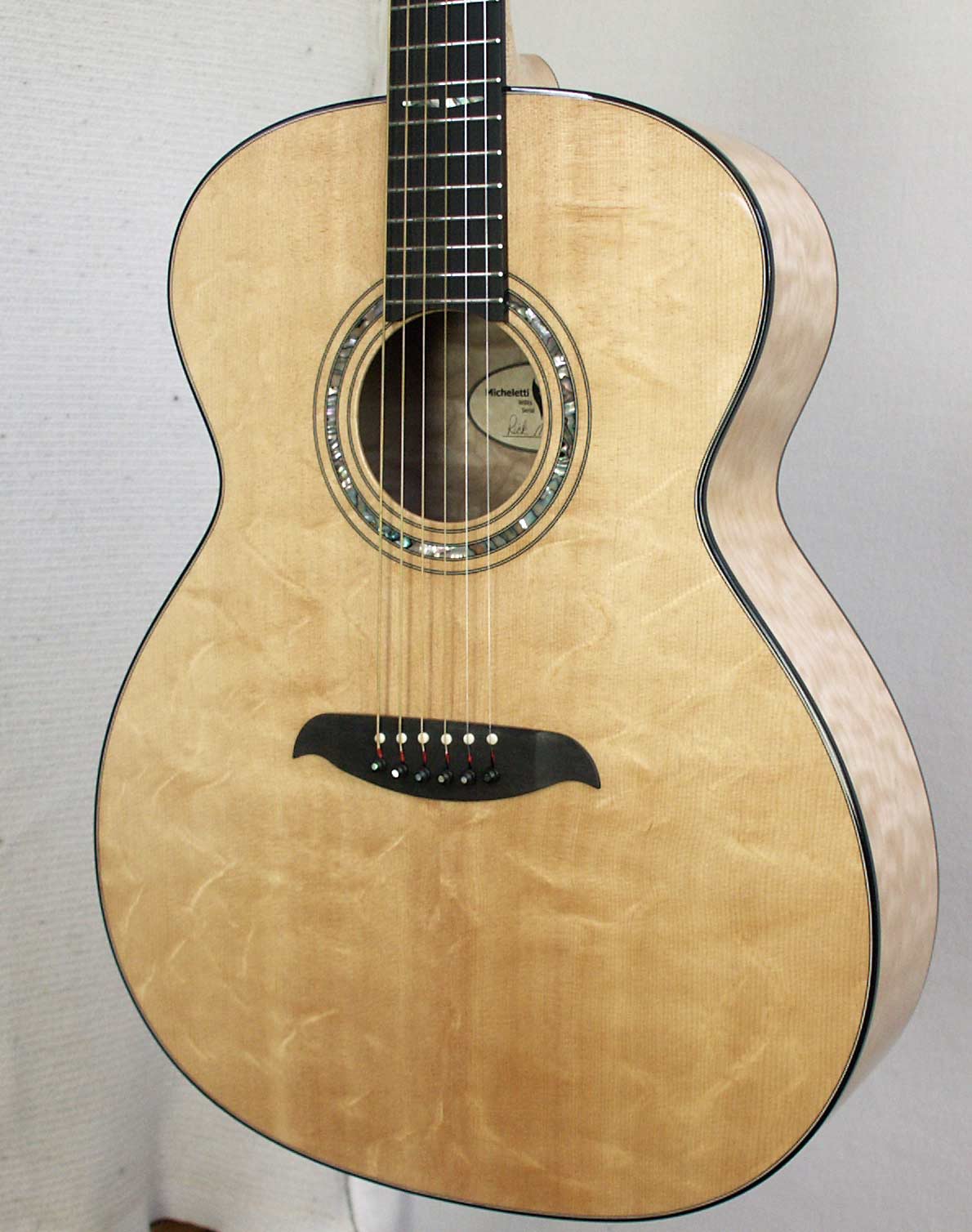 |
Sitka Spruce
Since Sitka spruce is the most
commonly used top material on steel-string guitars, it has become the basis
of comparison for other tonewoods. For its weight, its one of the strongest woods in the
world. It is usually best if medium gauge strings are
used but good for light gauge also. It has a strong fundamental but also
good
midrange brightness.
This material tends to have the
best headroom, that is, it retains clarity and definition when played hard.
Shown here with Bearclaw figure.
|
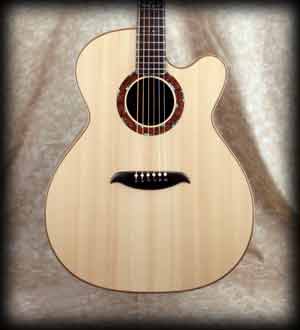 |
European
Spruce
Also
known as Silver spruce and German spruce, this is the top of choice for many
classical guitars. It works excellent on steel-string guitars as well. It
has a lighter color than Sitka and a wonderful harmonic complexity. People
comment on its fullness at the lower end of the dynamic range.
This
material responds well to a light touch and hangs in there well with more
aggressive techniques.
|
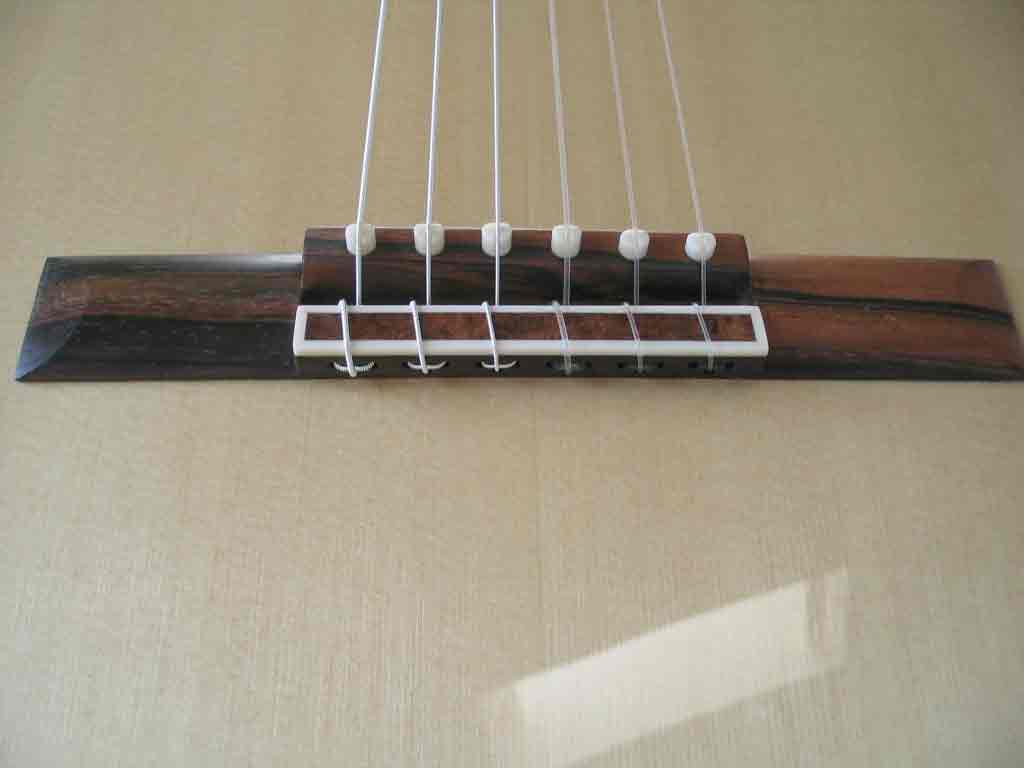 |
Engelmann Spruce
This spruce is lighter in color
and weight than Sitka or European. It has a more homogenous look to it, you
can barely see the grain lines.
That said, it produces a
noticeably broader and stronger overtone component. Engelmann is a good
choice for players who require a richer, more complex tone than can be
obtained from most Sitka tops. This is particularly true when the guitar is
played softly.
|
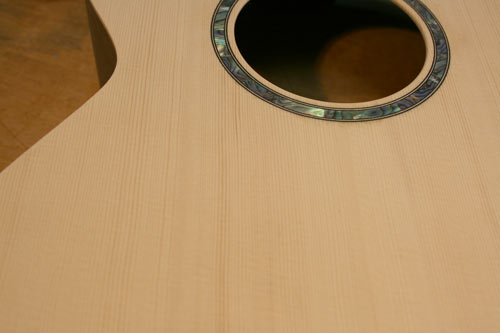 |
Adirondack Spruce
Also known as Eastern red spruce and
Appalachian spruce, this material was used by American guitar manufacturers before
World War II. Because of over harvesting, it fell into disuse until recently
thanks to 50 years of regeneration.
The new generation of Adirondack
spruce has retained the same wonderful properties of the older one but even
the best tops have more variation in color and grain than before.
Like Sitka, it has strong fundamentals, but it
also exhibits a more complex overtone component. Tops of this material
probably have the highest volume ceiling of any species. The great thing
about this spruce is that it has a full richness of tone that retains
clarity at all dynamic levels.
|
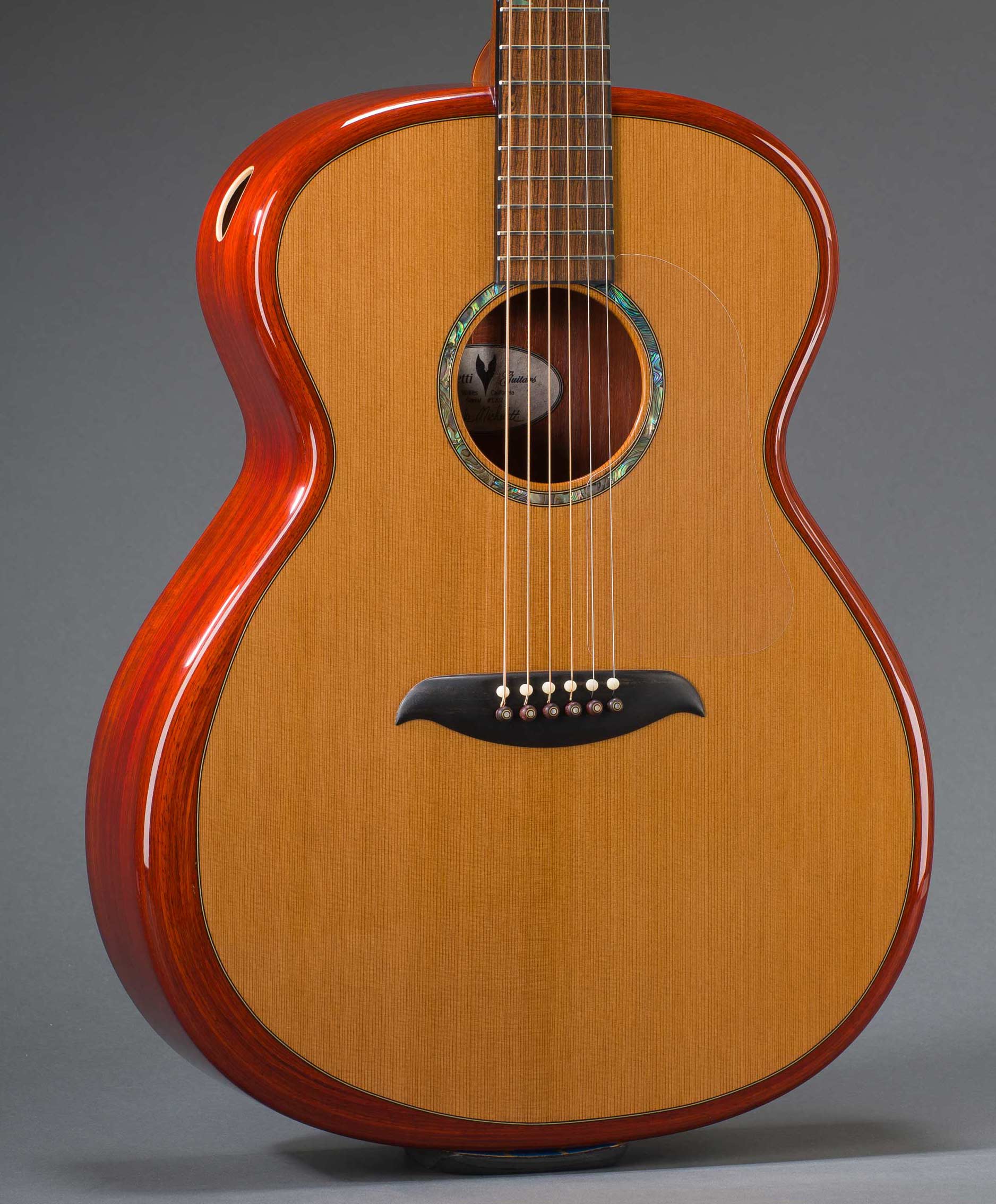 |
Western Red
Cedar
Western Red cedar ranges
in color from honey brown to light chocolate. It has a quickness of sound
that exceeds any of the spruces, a higher overtone content, lower
fundamental content, and lower stiffness along the grain. Additionally,
cedar tops require a significantly shorter break-in period than spruce tops,
a phenomenon that a few dealers of new guitars are beginning to pick up on.
Cedar-topped guitars
are characteristically lush, dark-toned. They are often less powerful in
projection than their spruce cousins, however, and they tend to lose clarity
near the top of their dynamic range. Having enough bottom end is never a
problem for a cedar guitar, although preventing the sound from getting muddy
sometimes is. Because of its pronounced weakness along the grain, I find
cedar to be used to its best advantage in smaller-bodied guitars or with
non-scalloped braces. Redwood is usually darker in color than cedar and
often displays the same general tonal characteristics, leaning slightly
toward darker tones, less definition in the bass, and lower velocity of
sound.
|

